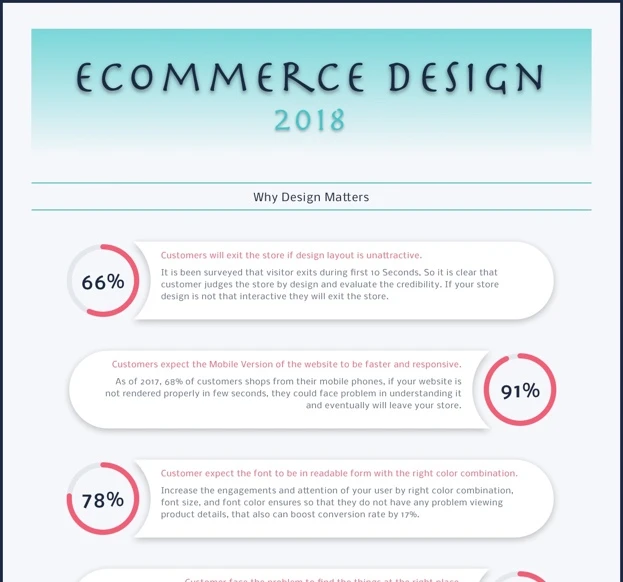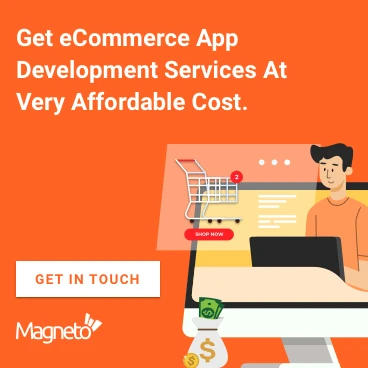eCommerce Design Trends: Features and Stats for Success – Infographic

Ecommerce is a highly competitive niche for both, merchants and designers. Getting accustomed to the latest ecommerce design trends in 2018 can grant you complete success in your online ventures.
Why Design Matters?
- A recent survey on eCommerce design 2018 has revealed the following facts.
- 66% of eCommerce visitors are exiting the store within 10 (Ten) seconds if they found design layout unattractive.
- 68% of online shoppers are using mobile devices to shop. Therefore, 91% of mobile users of eCommerce website expect web design responsive and render completely within a few seconds.
- 78% of eCommerce customers believe that the right combination of background colors, font size, font color, and font style increase engagement, readability hence, can boost the conversion rate up to 17%.
- 84% of emphasis on following standard design conventions based on human behavior study on eCommerce websites so they can find things on the right and expected a place.

Embed this infographic on your site
Must-Have Features for eCommerce Website
- If you are going to ecommerce design and development, you must check the following advanced and essential ecommerce website features at expected locations in the site design for sure success.
- Logo – At the center of the top header
- Search box – top left of the header
- Shopping cart, contact number, login, and wish-list icons – top right of the header
- Call to action (CTA) – Right side of header image with big and prominent design including attention-grabbing texts and button
- Key selling points – A Slim bar just beneath the top header image illustrating by a combination of icons and short texts
- Featured product – A section or horizontal slider to depict featured products on the homepage
- Recommended products – Similar to featured products but illustrate personalized item based on the preferences and history of registered users
- Shop by category – arrange products belong to the same category
- Shop by occasions – classification and display of products sorted based on various occasions/events
- Rating & Reviews – just below the product image and short/tiny description of the product
- Textual Content – Below all sections displaying products. Content must be with title, headings, sub-headings, and arranged in short and logical paragraphs
- Blogs – A section with featured image, title, and summary/snippet
- Newsletter sign up – A section just upper portion of the footer with required form & CTA
- Related Infographic: B2B eCommerce Trends 2018

A section in footer containing links to the following significant pages:
- Terms & conditions
- Returns
- FAQ
Another section in footer consisting of:
- Privacy policy
- Shipping policy
- Disclaimer
- Intellectual property rights
About section in the footer:
- Company
- Testimonials
- Sitemap
- Contact us
Contact info – at the bottom right of the page in the footer with a physical address, email address, phone number, and social media logos
E-commerce Design Trends
The following design trends observed in the ecommerce niche.
Conversational UI:
Shoppers love dynamic and interactive UIs, instead of flat and static ones.
Unified Design:
Responsive and unified UIs and layout designs that work seamlessly across the devices and screens.
Experimental Layouts:
Innovations and uniqueness in design only come with experiments and implementation of various ideas.
Material Design & Gradients:
Material design is an advanced design concept and provides enough stuff to go creatively.
Mobile-First:
Nearly 70% of shoppers are shopping online using mobile devices, and 90% of all shoppers prefer responsive web design.
Personalization:
Everyone loves personal approaches and special treatments. It is only possible with the latest personalization technologies and techniques in eCommerce.
Conclusion:
These are some tips, insights, and illustration of facts. The success formula for your eCommerce design is in the hands of seasoned eCommerce developers at Magneto IT Solutions. You have to go a step forward and initiate dialog with the team to get high quality throughput’s at competitive costs.


